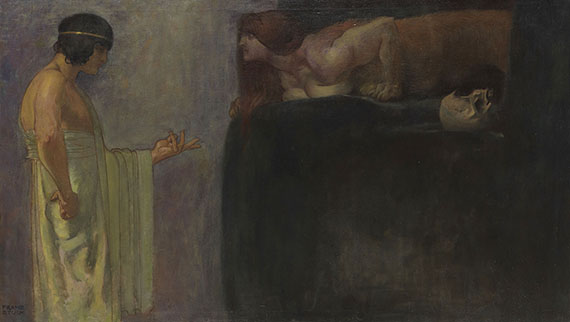Dictionary


Early German Art
Early German art refers to art executed in Germany between the late 15th and early 16th centuries. The term has its roots in "Old German Art", which was coined as a means of distinguishing the style from "barbaric" Gothic art. During the Romantic period, early German art became regarded as evidence of a glorious German medieval age. The term is no longer used, having been replaced by "German Late Gothic". The early exponents of a German "Ars Nova" in the Flemish tradition, include Lucas Moser (c. 1390- after 1434) from Ulm, Hans Multscher (c. 1400-67), and Konrad Witz (c. 1400-46) from Basel. The most important representatives of the transition and preservation of the "Soft Style" were Stefan Lochner (c. 1400/10-51) and the Cologne school of painting in the 15th century. Martin Schongauer (c. 1445-91) and the Master of the House Book in the Rhenish Palatinate (c. 1470-1505), are considered the most important exponents of this style from the1400s. Around the same time, Bernhard Strigel (c. 1460-1528) and the Memminger painters formed the Upper Swabian school of early German art.
The transition from the mediaeval to the modern period was profoundly marked by the work of Albrecht Dürer (1471-1528). The development of early German art was significantly influenced by his oeuvre, and the "Dürer Period", around 1500, is regarded as the zenith of German art. It produced numerous important masters such as Lucas Cranach the Older and Younger (1472-1553 and 1515-86), as well as both Hans Holbeins (c. 1465- c.1524 and c.1498-1543). Dürer’s achievements, whose style is sometimes referred to as "baroque", were carried over into the beginning of the 16th century. Dürer's student, Hans Baldung (called Grien, 1484 or 1485-1545) executed very expressive works, and Mathis Gothart-Nithart's (called Grünewald, around 1475/80-1528), and the Danube School, produced equally striking examples of early German art.
Early German art refers to art executed in Germany between the late 15th and early 16th centuries. The term has its roots in "Old German Art", which was coined as a means of distinguishing the style from "barbaric" Gothic art. During the Romantic period, early German art became regarded as evidence of a glorious German medieval age. The term is no longer used, having been replaced by "German Late Gothic". The early exponents of a German "Ars Nova" in the Flemish tradition, include Lucas Moser (c. 1390- after 1434) from Ulm, Hans Multscher (c. 1400-67), and Konrad Witz (c. 1400-46) from Basel. The most important representatives of the transition and preservation of the "Soft Style" were Stefan Lochner (c. 1400/10-51) and the Cologne school of painting in the 15th century. Martin Schongauer (c. 1445-91) and the Master of the House Book in the Rhenish Palatinate (c. 1470-1505), are considered the most important exponents of this style from the1400s. Around the same time, Bernhard Strigel (c. 1460-1528) and the Memminger painters formed the Upper Swabian school of early German art.
The transition from the mediaeval to the modern period was profoundly marked by the work of Albrecht Dürer (1471-1528). The development of early German art was significantly influenced by his oeuvre, and the "Dürer Period", around 1500, is regarded as the zenith of German art. It produced numerous important masters such as Lucas Cranach the Older and Younger (1472-1553 and 1515-86), as well as both Hans Holbeins (c. 1465- c.1524 and c.1498-1543). Dürer’s achievements, whose style is sometimes referred to as "baroque", were carried over into the beginning of the 16th century. Dürer's student, Hans Baldung (called Grien, 1484 or 1485-1545) executed very expressive works, and Mathis Gothart-Nithart's (called Grünewald, around 1475/80-1528), and the Danube School, produced equally striking examples of early German art.
Offers




